![Glowing White Mushroom [Flickr Explore, my 1st] Glowing White Mushroom [Flickr Explore, my 1st]](http://cdn.ipernity.com/127/68/35/17756835.973e964e.75x.jpg?r2)
Explored on Flickr (103!!!)
I may not be on Flickr anymore, but these Explores meant a lot to me!
English Plantain: The 64th Flower of Spring & Summ…
| |
|
Even though this flower is considered to be an invasive weed, I've always loved its unusual and interesting shape. What I didn't know was its colorful history! A native plant of Europe, it is now found in most parts of the world and has been found all the way back to the early Neolithic age, about 8,000 years ago! I wonder if that's why it's so odd looking!!! There is evidence that people in what is now Germany gathered "Plantago lanceolata" for a food source for their farm animals. It has been historically known as a medicinal cure-all, even mentioned by Chaucer and Shakespeare!
Today, this herbal plant is found to be useful as a cough suppressant and if you look up Ricola , you'll see this herb listed as one of the ingredients they use in their formulas! It's also used in teas and other herbal remedies. Besides its mediciinal uses, Plantains (not related to the banana relative by the same name) are also edible; young leaves and flower heads can be added to salads; the leaves can be substituted for spinach. If you would like to know more about its edible and medicinal uses, there's a great page here: Prairie Land Herbs: Plantain If you would like to know more about the plant in general, Wiki has a source here: Wiki: Plantain (Plantago lanceolata) and here Wiki: Plantago
Explored on June 10, 2012, placement at #406
Lark Sparrow in Flight (Explore #22!)
| |
|
|
The Lark Sparrow can be found throughout most of North America and as far south as Guatemala. It has been seen in western Europe as well. They are mainly seed eaters but also eat insects during the breeding season. They nest on the ground in grass cups sheltered by clumps of grass. If you would like to know more about these birds, Wiki has a source of information here: Wiki: Lark Sparrow
Explored on June 11, 2012, placement at #60
I See You (Explore #23!) [+1 in a note]
| |
|
[+1 in a note above]
One of the reasons I love Flickr so much is the inspiration I get from the pictures I see. I once saw an image of a single wild oat taken directly from above and it was so totally cool and awesome that it completely changed the way I see natural subjects. I am always on the lookout for that super cool top-down view that isolates a simple subject and makes it special. Yesterday I posted pictures of a False Dandilion , and if you'll look at the second picture I posted, you'll see some buds from a side view. Here we get to see what a bud looks like when it's trying to impersonate the Eye of Sauron from the Lord of the Rings!
I've uploaded two other pictures today and I hope you'll visit them too!
Thanks to all of you who have visited and have left comments and favorites! I try to go to all of your pages within a day or two and is a highlight for me to see your beautiful photography! :)
Explored on June 12, 2012, placement at #33
Splash! (Explore #24!)
| |
|
What you're seeing is a macro view of a waterfall cascading over rocks at Mill Creek Falls, near the tiny town of Prospect, Oregon. On this day I didn't want to bother with my ND filter for a milky, long-exposure shot. Instead, I decided to have some fun at the water's edge as it boiled past me and down the steep drop off and onwards through the forest. I took dozens of pictures in the hopes that just one would turn out nice, but in the end, I found far too many that turned out well, so I've picked one of them as my third image for our local photography club's "Motion" theme. I hope you like it! :)
I've uploaded two other pictures today and I hope you'll visit them too!
Thanks to all of you who have visited and have left comments and favorites! I try to go to all of your pages within a day or two and is a highlight for me to see your beautiful photography! :)
Explored on June 13, 2012, placement at #165
Rear View (Explore #25!)
| |
|
Back in April, I posted the 35th Flower of Spring, the Narrowleaf Mule's Ear. This flashy flower is in the Aster family, and has a strong resemblance to sunflowers. They grow all over our hillside and I had a lot of fun taking pictures of these when they were in bloom. Here's one of my favorite shots, I taken from behind with the sun glowing through the petals.
I've uploaded two other pictures today and I hope you'll visit them too!
Thanks to all of you who have visited and have left comments and favorites! I try to go to all of your pages within a day or two and is a highlight for me to see your beautiful photography! :)
Explored on June 15, 2012 placement at #32
Large Periwinkle: the 69th Flower of Spring & Summ…
| |
|
There seems to be no end to the number of flowers that grow here on our property! I don't have an actual number at this point but it's well over 100 and I keep finding more almost every day!! Most of the flowers are wild, and though a smaller version of this flower is actually naturalized here in Oregon, this is one of the plants that was here when we moved and we love its deep green leaves and blue-violet-purple flowers!
The Large Periwinkle is native to southern Europe, as well as the Caucuses and Turkey. The smaller but nearly identical Common Periwinkle has also been naturalized in various parts of the United States, including Oregon. In fact, just down the road from our house, I've found it growing wild and it was fun to recognize it there! I was fascinated to discover how to easily tell the difference between the two types: if the leaves have fuzzy edges, it's the Large Periwinkle or "Vinca Major" and if the leaves are smooth, it's the Common Periwinkle or "Vinca Minor". These plants are usually evergreens and are very popular choices for gardens due to their hardiness and ground-covering nature.
If you would like to know more about this flower, Wiki has a page here: Wiki: Large Periwinkle (Vinca major)
Explored on June 15, 2012, placement at #210
Staring Contest (Explore #27!)
| |
|
|
*** First Place Winner at the Jackson County Fair! ***
Emus are remarkable creatures. They look like dinosaurs and they cannot fly. Although they have feathers like a bird, their bones are not hollow. They don't have a normal bird's breastbone but instead have a plate similar to a turtle's shell. This plate looks like a raft, which is where their group's name, "Ratitae" comes from--Ratis means "raft" in Latin.
Back in May, my husband and I got to visit a local Emu ranch with our photography group and I took many pictures. As I post my best over the coming weeks, I'll be adding more information about this amazing bird with each picture. However, if you would like to know more information, Wiki has a great page here: Wiki: Emu
I've uploaded two other pictures today and I hope you'll visit them too!
Thanks to all of you who have visited and have left comments and favorites! I try to go to all of your pages within a day or two and is a highlight for me to see your beautiful photography! :)
Explored on June 15, 2012, placement at #220
Droplets in Sepia (Explore #28!)
| |
|
|
This is a last shot in a series of images I took of a dead philidendron leaf I found on one of our houseplants. As I was about to throw it away, I realized it would be a beautiful subject to photograph. When I washed the dust off, I was surprised to see how beautifully the water beaded on the surface, and took several pictures which I've shown in my stream over the last couple of months (below I will post the other pictures I took) I thought it might be nice to try turning the image into a sepia tone and was very pleased at the result! I hope you like it too!
Explored on June 16, 2012, placement at #48
Oooooh...Shiny!! (Explore #29!)
| |
|
This darling Emu chick is mesmerized by a metal ring at the side of the chick brooder it's in with its many clutch-mates. A chick brooder is a specially designed, enclosed area that can be kept at a precise temperature to make sure the babies are warm and comfortable. Everything at the High Cascade Emu Ranch was perfect in every way for every bird and at every stage of their lives. I am extrememly critical about animal welfare and I was very impressed by every single detail. From chicks to juveniles to adults, their facilities were spacious, safe, clean, and comfortable.
(This picture is part of a series of shots taken at the High Cascade Emu Ranch , where I went with my husband on a photo club outing. I'll be showing many pictures of my visit in the coming weeks!)
I've uploaded two other pictures today and I hope you'll visit them too!
Thanks to all of you who have visited and have left comments and favorites! I try to go to all of your pages within a day or two and is a highlight for me to see your beautiful photography! :)
Explored on June 17, 2012, placement #159
Great Hound's Tongue Blossom & Seed Pods (Explore…
| |
|
|
Back in March I posted the bud form of the Great Hound's Tongue . Here is the last blossom of a group of flowers with plump red pods on the left and right, full of maturing seeds. Below is a picture that should make just about anyone blush and then laugh out loud! It's a pair of seed pods but, well...it doesn't take much imagination to see what it looks like! Definately one of my funniest shots! :D
I've uploaded two other pictures today and I hope you'll visit them too!
Thanks to all of you who have visited and have left comments and favorites! I try to go to all of your pages within a day or two and is a highlight for me to see your beautiful photography! :)
Explored on June 18, 2012, placement #365
Western Goatsbeard: The 107th Flower of Spring & S…
| |
|
|
|
I have always loved this flower from the first time I saw it growing on our property. The sharp-looking green sepals are so cool-looking and the blossoms are just beautiful! After the flowers die away, they create the biggest "dandelion heads" I've ever seen! (I'll have pictures of these too in the coming weeks) It was hard to resist taking zillions of pictures and I managed to get so many nice ones that I've shown three more below. I'd love to know which is your favorite! :)
Western Goatsbeard is native to most of Europe and western Asia and was introduced to North America, where it can be found almost everywhere in the United States and Canada. In fact, it's considered to be an invasive weed because it grows so readily and is difficult to irradicate once established. The root and stems are edible but this species is usually not used as a source of food. Other species, especially a lovely purple variety known as Oyster Plant, were once cultivated in the Mediterranean as an important vegetable as well as a traditional herbal medicine. Western Goatsbeard is not known to have any medicinal qualities.
If you would like to know more about this flower, Wiki has a very nice page here: Wiki: Goatsbeard (Tragopogon dubius)
Thanks to all of you who have visited and have left comments and favorites! I try to go to all of your pages within a day or two and is a highlight for me to see your beautiful photography! :)
Explored on August 7, 2012, placement at #340.
Lucky's Pond: You're Stepping on My Head! (and upd…
| |
|
|
When it comes to froglets, they clearly have no manners! I was taking a picture of these four, when one of them decided he didn't want anything to do with the paparazzi, and began climbing up the rock. Apparently, the best way to get to the rock is by stepping on your fellow froglet's HEAD, and judging by this fellow's expression, I don't think he was very impressed with the situation! :D
Lucky's Pond Update: it's August now, more than a month since I rescued the masses of tadpoles from our dried-up seasonal pond and created Lucky's Pond up at the house. Since then, countless tadpoles have grown up and left the pool as tiny frogs. I saw the largest number of froglets about two weeks ago, when they were sitting all over the rocks and the sides of the pool, but these days, I only see one or two froglets and I really have to search to find them. And yet, there are still a bunch of tadpoles that have no legs! I guess they really enjoy the wonderful amenities here and don't want to grow up! :D I'll be sharing more pictures of the froglets though because they're just too cute! In a few days I'll be posting the last one for a while, but will add a new one from time to time--I just don't want you all to become tired of looking at these cutie pies!!! :D
I've uploaded two other pictures today and I hope you'll visit them too!
Thanks to all of you who have visited and have left comments and favorites! I try to go to all of your pages within a day or two and is a highlight for me to see your beautiful photography! :)
Explored on August 8, 2012. Highest placement at #293.
Lucky's Pond: Hangin' Out [Explore #33]
| |
|
Can you think of anything nicer than relaxing at a cool pond on a hot summer day? This darling froglet shows us how it's done in fine style! The temperature here is between 85° and 100° F (30°-38° C) from July through August, but in Lucky's Pond, the water is probably about 70°-76°. I specifically placed the pool under the Oak tree near our front door so it is shaded for most of the day. This keeps the evaporation and heat down but they still get some sun shining on the pool for those who want to work on their tanning! :D
Can you believe that this little guy is only about 1/4" in size?! So cute!! When he grows up, he will be up to 2" from nose to urostyle (hind end). Pacific Tree Frogs are a bit smaller than the average size of frog, which is about 3"-5" from nose to urostyle. The largest frog in the world is the Goliath Frog from Cameroon, Africa, which can grow to be 13" from nose to urostyle! The world's smallest frog is the adorably tiny Paedophryne Amauensis from Papua New Guinea, and at full size is just a little larger than this Pacific Tree froglet at .30" or 7.7cm!!
More fun froggy facts tomorrow, along with another picture from Lucky's Pond! :)
By the way, I've uploaded two other pictures today and I hope you'll visit them too!
Thanks to all of you who have visited and have left comments and favorites! I try to go to all of your pages within a day or two and is a highlight for me to see your beautiful photography! :)
Explored on August 9, 2011. Placement at #211.
Eye to Eye [Explore #34]
| |
|
Here's another picture from the livestock barns at the Jackson County Fair! Goats have such wonderful character and funny expressions, don't they?! I just love them!
This cutie pie is a Alpine goat! In case you didn't read the information posted with the last picture, here it is again:
Alpine goats are a dairy breed which was first bred in French Alps. Because they produce a large amount of milk, they are often found at commercial dairy farms. They are also popular because they thrive in many types of climates, maintaining good health and production.
If you would like to know more about these goats, the Alpines International Club has a very nice website. Wiki also has a nice page here: Wiki: Alpine Goat
By the way, I've uploaded two other pictures today and I hope you'll visit them too!
Thanks to all of you who have visited and have left comments and favorites! I try to go to all of your pages within a day or two and is a highlight for me to see your beautiful photography! :)
Explored on August 12, 2012. Highest placement at #229.
Golden Yellow Garden Rose: The 112th Flower of Spr…
| |
|
(Please scroll down to see 4 more pictures!:D)
Just outside our house we have a bunch of rose bushes which were planted before we moved here. The flowers are beautiful and care-free. I don't even water them and it doesn't matter. Every year we have bunches of glorious blossoms, some with lovely fragrances, others without a smell. These golden yellow roses have a wonderful, deep fragrance which is amazing to smell on a warm day!
Since these flowers are right outside, I took an embarrassing number of pictures. I hope you like the 5 that I've picked for this little show!
Garden roses are usually cultivated hybrids and are the most popular flower in the world for their beauty, fragrance, and versatilty. They are most often grown for their blossoms, but sometimes favored for other uses, such as a hedge plant or for the rosehips it produces.
Roses have been cultivated for over 5,000 years and were grown in ancient Babylon, Egypt, and in ancient China and Greek gardens as well. There are over 6,500 cultivated species in the world, a number that grows every year as more hybrids are created!
There are many fantastic sources for information about cultivated roses. Wiki has a very thorough introduction here: Wiki: Garden Roses . The American Rose Society is vast and wonderful!
There's also the World Federation of Rose Societies , which will lead you to societies in 41 different countries! Enjoy!
Explored on August 13, 2012. Highest placement at #204.
Lucky's Pond: Graduation Day! (best viewed large!)…
| |
|
|
|
(If you want to know about Lucky, please visit this picture and read the story! :) My Friend Lucky
Would you just LOOK at these cutie pies?!!! I couldn't believe my eyes when I took a peek in the pond a couple of weeks ago and found all of these tiny froglets lined up and ready for a graduation picture!
Yes, it's that time!! The day finally came when most of the froglets hopped off to find their fortunes on the property surrounding Lucky's Pond. A couple of days after I took this picture, there were almost no more froglets left. I see a froglet now once every couple of days, though there are still many tadpoles swimming around enjoying themselves and happy to continue being babies! (Some tadpoles delay their metamorphosis for up to six months.)
It's been such fun taking pictures of these guys and sharing what I've learned about frogs and tadpoles. I have many more adorable images, but for now, I'm going to stop posting pictures as a daily event. Instead, I'll put up a froglet or tadpole picture every week or so, since we all love them so! Thanks so much for all of your fantastic comments and encouragement, it's made me feel so great knowing that everyone has enjoyed this project as much as I have!
For those of you who didn't read my update a few days ago, we'll be keeping Lucky's Pond in place forever, and I'll be building the land up around this kiddy pool with rocks and dirt so that it will be level with the lip of the pool when I'm done. We'll always keep it as a froggy sanctuary, with its screen on top so that the wildlife doesn't empty the pond by drinking all the water. What a wonderful experience this has been! Long live Lucky and all of his friends at Lucky's Pond!!! Hooray!!!
By the way, I've uploaded two other pictures today and I hope you'll visit them too!
Thanks to all of you who have visited and have left comments and favorites! I try to go to all of your pages within a day or two and is a highlight for me to see your beautiful photography! :)
Explored on August 14, 2012, placement at #208.
The Lovely Monarch and Painted Lady [Explore #37]
| |
|
|
How many of you have wanted to take pictures of butterflies but you've never gotten the chance? Butterflies are usually very skittish and getting pictures can be a lot about luck. It's hard to get close enough before they fly away, but once in a while they hold still long enough that you may be able to take a picture!
However, did you know that there are butterfly farms and houses, as well as special gardens open to the public that are specialized to attract butterflies?! In the United States, there are special butterfly establishments listed in most statws, and many are listed in other countries in the world as well.
In these places, visitors often get to walk into the butterfly exhibit and spend a specified amount of time there. It's a perfect opportunity for photographers to take lots of images of species they have may never seen before, and perhaps their very first butterfly pictures! I was so excited when I found out about this butterfly exhibit at the Jackson County Fair, and I had a fantastic time!
A word of advice if you want to visit one of these places: be sure to bring your flash or at least your tripod! I didn't bring either and was horrified when I discovered how dark it was inside the exhibit. The only reason my pictures turned out at all is because my Canon 5D Mk II features ISO up to 6400, and I have an Photoshop filter called Topaz DeNoise which does an excellent job. Otherwise I would have been out of luck!
If you would like to find out if there's a butterfly establishment where you live, here are some links for you!
The Butterfly Website: Butterfly Gardens and Exhibits
The Butterfly Site: Butterfly Houses, Farms and Gardens
Explored on August 15, 2012. Highest placement at #38.
Slender Tarweed: The 115th Flower of Spring and Su…
| |
|
PEEE-YEWWW, the nickname for these flowers is Stink Weed! One whiff and you will come up with the name by yourself, "WHAT IS THAT SMELL!!! IT STINKS!" I guess "Tarweed" is a kinder name, but it's descriptive. The problem with all the species in this genus is that they are covered with sticky resin and if you walk past a plant, you'll know the second you walk into your house when the smell hits you! I avoid taking our dogs out into the meadow when Tarweed is growing because the house smells for hours after we get home! *wrinkles nose* Clothes with any resin on them must be washed right away and if you get it on your skin, you'll need alcohol to break down the resin! ACK! It's no fun to walk through this stuff!
That being said, Tarweed has beautiful flowers and we have at least four different species on our property! :) Just be glad these two pictures aren't "Scratch & Sniff" images! You wouldn't be able to resist finding out what they smell like, and then you'd be really sorry! :D
Slender Tarweed is part of a genus of flowers which includes 11 species, all of which grow in the western regions of North America. Wiki lists them as "aeromatic herbs" which is a very polite way of saying STINK WEEDS! :D This plant is hated by ranchers because the resin will coat the legs and muzzles of livestock and is very difficult to remove.
Native Americans collected these plants' plentiful seeds, which they ground up and mixed into an important cornflour-based food called pinole.
If you would like to know more about this flower, I found a nice page here: Tarweel
Here's another page: Tarweed PDF
Wiki has a minimal source here: Wiki: Tarweed (Madia)
Explored on August 16, 2011. Placement at #55.
Jump to top
RSS feed- Latest items - Subscribe to the latest items added to this album
- ipernity © 2007-2024
- Help & Contact
|
Club news
|
About ipernity
|
History |
ipernity Club & Prices |
Guide of good conduct
Donate | Group guidelines | Privacy policy | Terms of use | Statutes | In memoria -
Facebook
Twitter

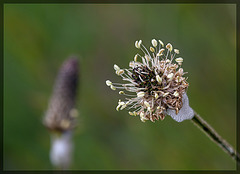
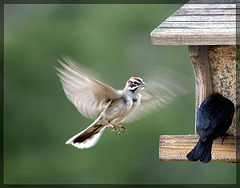
![I See You (Explore #23!) [+1 in a note] I See You (Explore #23!) [+1 in a note]](http://cdn.ipernity.com/127/88/07/17708807.1b126ff0.240.jpg?r2)


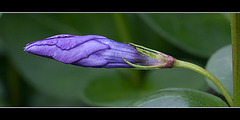
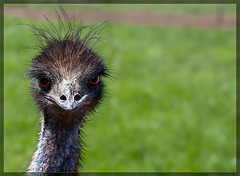

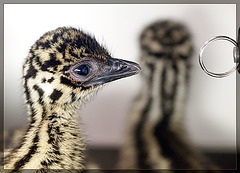
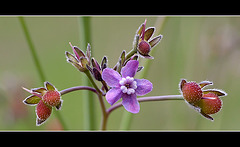
![Western Goatsbeard: The 107th Flower of Spring & Summer! [Explore #31] Western Goatsbeard: The 107th Flower of Spring & Summer! [Explore #31]](http://cdn.ipernity.com/127/87/29/17698729.d87e3091.240.jpg?r2)
![Lucky's Pond: You're Stepping on My Head! (and update!) [Explore #32] Lucky's Pond: You're Stepping on My Head! (and update!) [Explore #32]](http://cdn.ipernity.com/127/85/69/17698569.e06ae20d.240.jpg?r2)
![Lucky's Pond: Hangin' Out [Explore #33] Lucky's Pond: Hangin' Out [Explore #33]](http://cdn.ipernity.com/127/84/93/17698493.2564bc7e.240.jpg?r2)
![Eye to Eye [Explore #34] Eye to Eye [Explore #34]](http://cdn.ipernity.com/127/86/95/17698695.9f6c1d3c.240.jpg?r2)
![Golden Yellow Garden Rose: The 112th Flower of Spring & Summer! [Explore #35] Golden Yellow Garden Rose: The 112th Flower of Spring & Summer! [Explore #35]](http://cdn.ipernity.com/127/85/31/17698531.c8cb43da.240.jpg?r2)
![Lucky's Pond: Graduation Day! (best viewed large!) [Explore #36] Lucky's Pond: Graduation Day! (best viewed large!) [Explore #36]](http://cdn.ipernity.com/127/83/15/17698315.0a892f67.240.jpg?r2)
![The Lovely Monarch and Painted Lady [Explore #37] The Lovely Monarch and Painted Lady [Explore #37]](http://cdn.ipernity.com/127/82/53/17698253.ffd0db90.240.jpg?r2)
![Slender Tarweed: The 115th Flower of Spring and Summer! [Explore #38] Slender Tarweed: The 115th Flower of Spring and Summer! [Explore #38]](http://cdn.ipernity.com/127/84/01/17698401.cfda5891.240.jpg?r2)